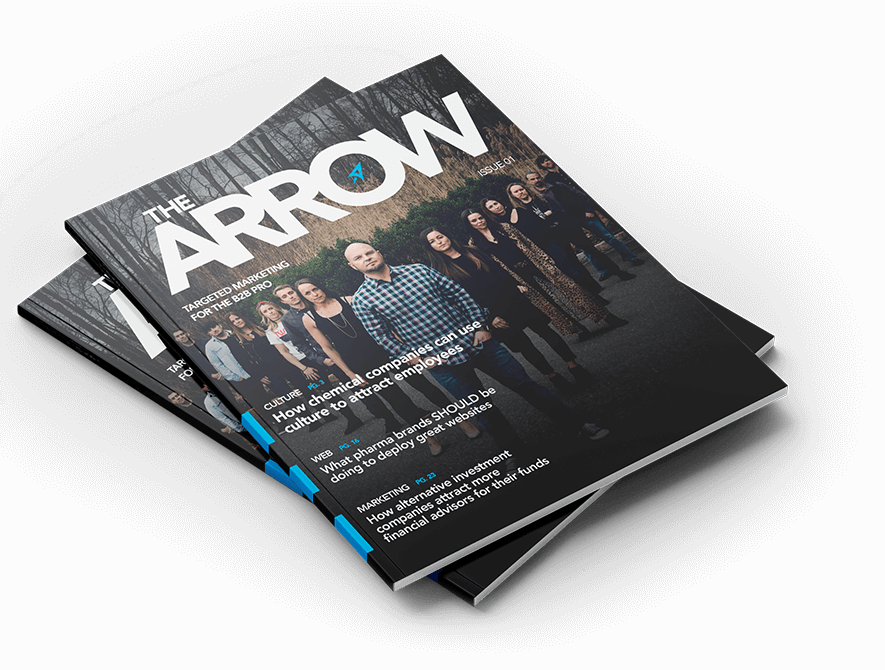Define Your Buyer Persona to Make Better Marketing Decisions
Chris Mulvaney is the CEO of CMDS. I make things... I’m the creative entrepreneur with passion for (re)making brands and inventing solutions to problems no one knows exist.
Stop wasting time by guessing what your audience wants and start understanding consumer needs. No matter what business, industry or organization you’re in, if you market a product or a service, you must create a buyer persona.
What is a Buyer Persona?
A buyer persona is a character-like prototype with traits that represent the ideal customer for a business. Knowing your buyer persona is a critical first step to help align marketing efforts. This semi-fictional identity includes real data on:
- Demographics
- Lifestyle factors
- Behavior patterns
- Interests
- Emotions
- Unique needs
- Triggers
- Problems
These characteristics are based on market research about existing clientele. A buyer persona also includes insight as to why customers choose to buy from your brand vs your competitors.
Armed with valuable insight from their buyer persona, brands have a much deeper understanding of their target audience, which allows them to make more strategic marketing decisions.
In other words, once a brand develops a buyer persona, they’ll be able to build messaging that aligns with the needs and expectations of their ideal customers messaging that inspires them to take action.
Why Do I Need a Buyer Persona?
Whether your organization is B2B or B2C, taking time to create a buyer persona is a vital first step to set the stage for a successful marketing strategy. Here are five undeniable reasons why you need a buyer persona.
1. More is not better. Better is better.
Attracting just anyone to your website can actually hinder results. We want to attract and convert the right people. By identifying your buyer persona, you’ll be able to create each piece of content and call to action with them specifically in mind.
Think about it. What’s more valuable? 100 random site visitors, 3 of which end up purchasing. Or 50 targeted site visitors, 14 of which end up purchasing.
End result? Content created with a buyer persona in mind = a better quality lead.
2. Stop shouting into a dark hole. Find out where they hang out.
 Stop wasting time shouting into a dark hole. Gain the location knowledge you need to target your marketing efforts towards the places they’re actually spending their time. Buyer personas can help you not only find out where they’re hanging out, but also learn more about their pain points, triggers and interests.
Stop wasting time shouting into a dark hole. Gain the location knowledge you need to target your marketing efforts towards the places they’re actually spending their time. Buyer personas can help you not only find out where they’re hanging out, but also learn more about their pain points, triggers and interests.
For example, if your persona prefers to scroll through Instagram rather than LinkedIn, you can explore putting sponsored content there rather than wasting ad dollars with sponsored ads on LinkedIn, where they don’t.
3. Build. Create. And respond with new products and services that they actually want.
When you have a solid grasp on what it is that your persona wants, you’ll be able to expand your product or service lines to things that they’ll actually want to buy. This is not only beneficial to help you attract new customers, but also connect with an existing customer base by showing them you’re prepared to accommodate their growing needs.
With this knowledge, you can add-to, refine or adjust your current offerings to cater to customers’ evolving needs.
4. Show them you care.

By creating a buyer persona, you’ll create a strong goodwill with customers. You can show them that you’re listening to their needs (not necessarily yours) and that you’re a customer-focused business. Even if they’re not interested in buying your product or service today, this genuine transparency and connection will put you in a favorable position when the time comes.
And it will.
5. Be better than the rest.
Distinguish yourself from the competition by making the effort to create a buyer persona. This is key differentiating point allows your business to stand out and show your customers that you have taken the time and effort to listen to their needs.
And, as you continue to refine your personas, your marketing efforts will become more and more targeted. This, in the long run, will help you build effective campaigns and acquire quality leads with a better chance of converting them into paying customers.
Demonstrate your commitment by responding with the right message.
How Do I Create Buyer Persona that Connects with Real Customers?
Before you can begin to market your products or services, you need to know who your target audience is and how best to reach them. To create a buyer persona that correlates with real humans, you must do some research and ask yourself a few key questions.
The more research you can do, the better you’ll be able to reach potential clients and resonate with them.
Step 1. Set Up The Interview

The most important part about creating a buyer persona is collecting quality information. Ensure all data is relevant and accurate. Meet with employees who are most familiar with your customer base. Schedule an interview with a long-time customer. Set up a survey online. Look through your database to unveil trends related to how people consume your content.
Note: you will probably have more than one buyer persona. This may depend on the variety of products or services you offer or where your audience falls in the sales cycle.
The process of gathering information will help you lay a strong foundation and fine-tune your business marketing strategy.
Step 2. Ask All the Questions

Who?
To determine who your ideal prospects are, start by looking at their demographics such as:
- Career
- Income
- Hobbies
- Interests
- Relationship status
- Age
Where?
Where is your audience located geographically? Where are they spending leisure time (do they use print media, YouTube, the internet, social media)? Where do they search for information (Google, social media channels, etc)?
FInd out where your customers spend their time, both physically and mentally and you’ll be more likely to garner engagement among others within their circles, such as friends and family, as well.
What?
Your clients have needs, wants, challenges and barriers that they’re looking to address. What do they love? What do they hate? What publications or blogs do they read? What are their short term and long term goals (both personal and professional)?
Dig into each of these details to make a strong human connection in your messaging.
How?
It’s not just enough to identify these things, you must also clarify how you will respond. How will your product or service offerings satisfy their wants, needs, challenges, etc? How will you communicate the benefits of your business and engage clients?
Step 3. Get Organized

Compile and organize all your answers from your persona interview into one place, for example, use a simple Excel spreadsheet. Analyze the data and look for trends in your responses. This will help you categorize the different personas you are creating.
As you are building out your personas, choose one primary buyer persona and then make the rest secondary.
Share the results with the rest of your team to gather their feedback and ensure all staff is on the same page. Keep in mind this process should be evaluated and reviewed quarterly. Update it regularly to ensure everyone fully understands your buyer persona and so that you can continue to align marketing with the persona in mind.
Sample Auto Buyer Persona

Meet Sam, The (Fictional) CEO
Sam is the Founder and CEO of Stonewall Cool, a premier interior design company in NYC.
Background:
- He has owned the company for over 10 years.
- Previously, he worked in the industry prior to ownership.
- He is married, lives in Basking Ridge, New Jersey and has three children.
- Owner of a late model Jeep Grand Cherokee
Demographics:
- Male
- Age 40-45
- Suburban
Traits:
- Type-A personality.
- Spends over 60 hours a week running the business.
- Works hard, but plays harder. Vacations at least four times a year with his family. Loves live music. Surfs the Jersey Shore every summer since he can remember. Goes skiing in the winter.
- Spends his time on LinkedIn connecting with clients, and Facebook connecting with his friends.
- Sam is looking for a new SUV that offers fuel economy since he commutes to the city each day.
- He also needs a car that can carry his surfboard and skis.
- Loves a good Cappuccino.
Goals:
- Get my business to the point where it’s not reliant on me so I can spend more leisure time with my family.
Challenges:
- Current vehicle is a gas-guzzler.
- Prefers a car with smart features and enough space for his family and sports equipment.
Sam’s Marketing Mix
- Provide digital information that supports fuel economy.
- Social media advertisement with photos and videos that highlight the vehicle’s versatility and smart features.
- Supply competitive comparisons to his current vehicle.
In this above buyer persona example, you can get a good idea of who Sam is by learning about his background, lifestyle and challenges. In just a few short sentences, you can gather that he’s a busy professional, needs a car that he can use to commute and fit his family and sports equipment, etc. As you build out Sam’s persona, consider how your product messaging will directly relate to him and his needs.
Create Your Brand’s Buyer Persona with CMDS
The choice is yours:
Either be fully engaged in understanding your audience….or be irrelevant.
At CMDS, we help businesses get set up for success from the beginning by creating their buyer persona to align marketing strategies more effectively. Need a new or refreshed buyer persona? Give us a shout at 732.706.5555 and we’ll get you started.





